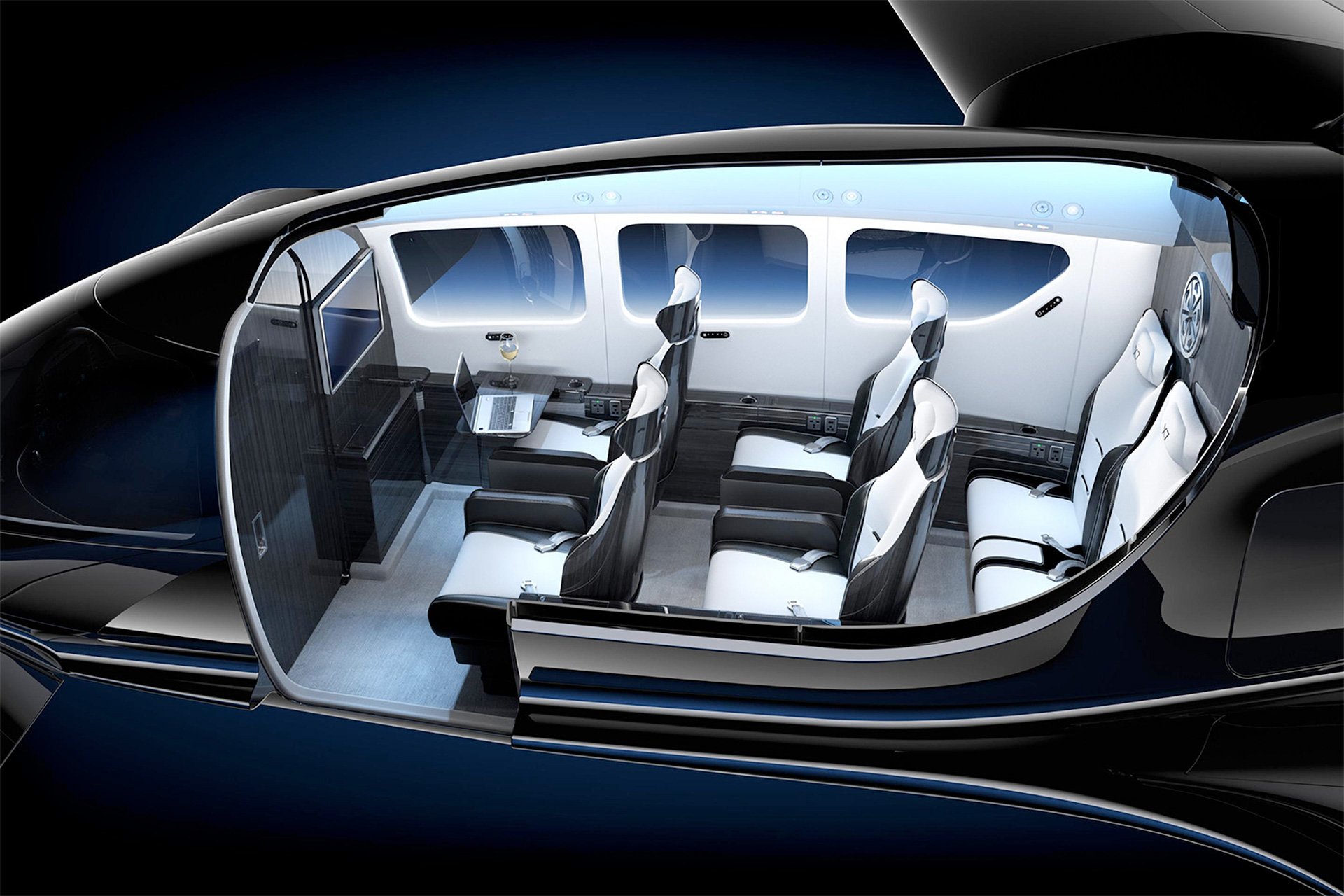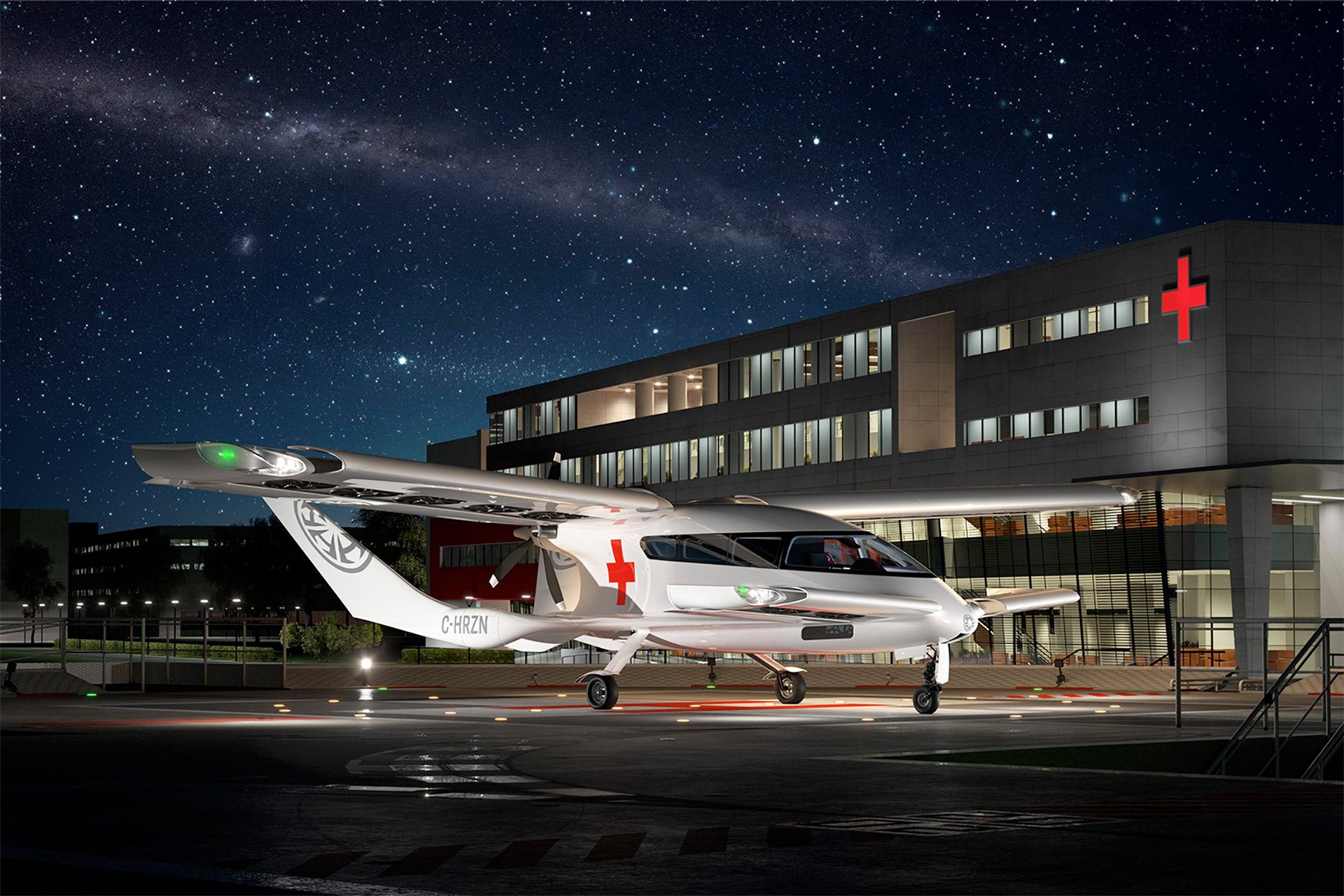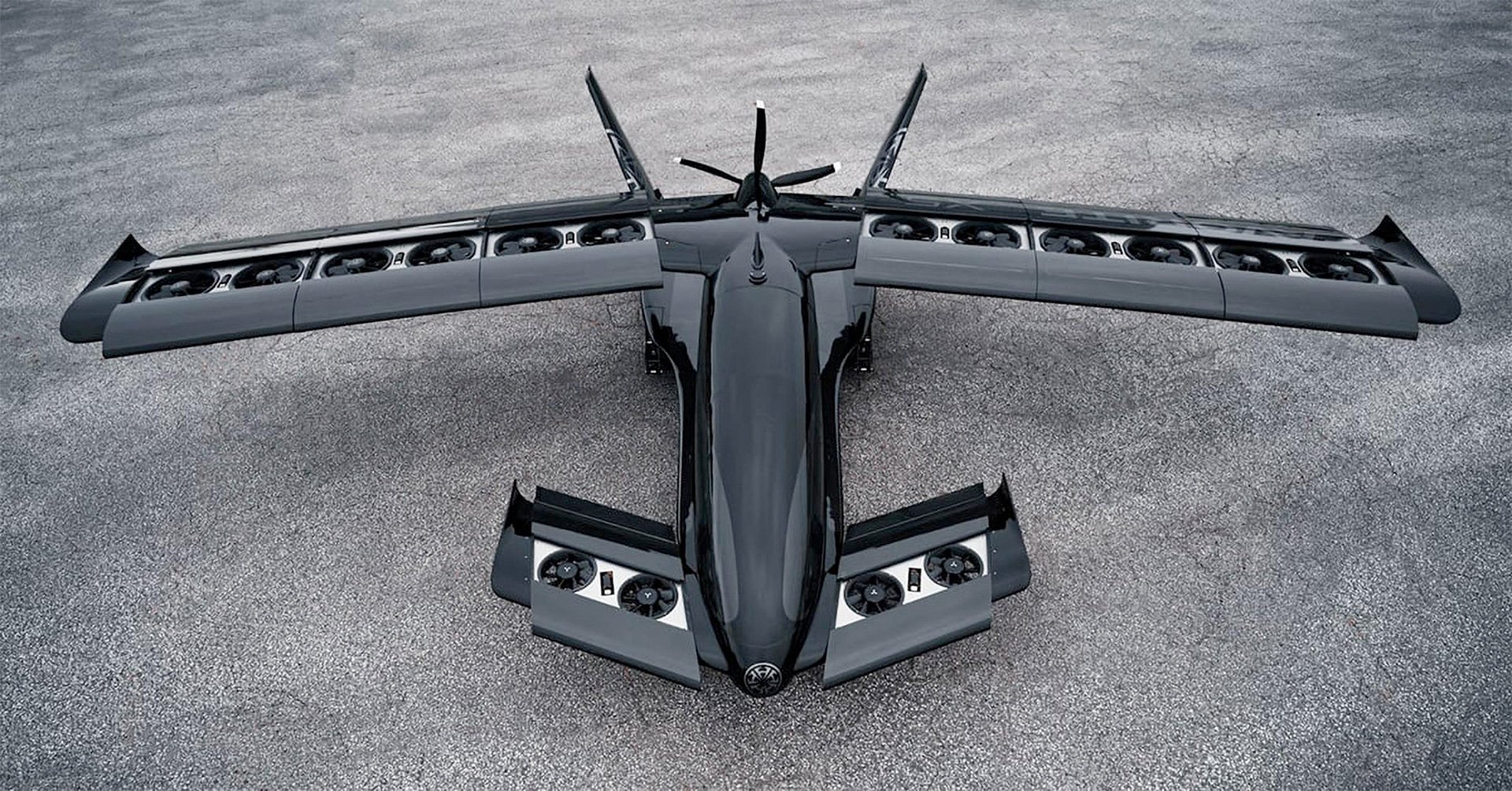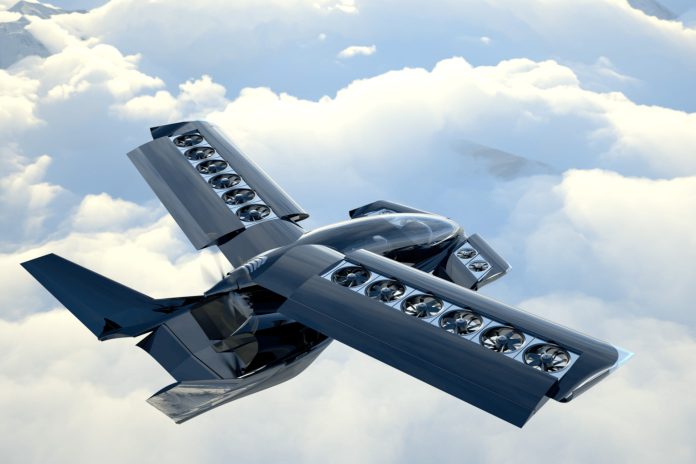In a significant step for hybrid-electric aviation, Canadian startup Horizon Aircraft has successfully completed a fan-in-wing transition flight with its large-scale Cavorite X7 demonstrator. This makes the X7 the world’s first electric vertical takeoff and landing (eVTOL) aircraft to achieve stable wing-borne flight using a unique embedded-fan design — a configuration that enables the aircraft to operate both as a vertical liftoff vehicle and as a conventional airplane.
A conventional aircraft with vertical lift capabilities
Unlike many eVTOLs that prioritize a futuristic, rotor-dominated design, the Cavorite X7 embraces the form and function of a traditional airplane. What sets it apart is the ability to take off and land vertically using 14 electric fans hidden within its wings and canards. The wings themselves feature a patented sliding mechanism that opens during vertical liftoff to expose the fans and closes as the aircraft transitions to forward flight.
Each main wing holds five fans, while two additional fans are embedded in each of the forward canards. These are powered by batteries during takeoff and landing. Once airborne, a rear-mounted gas turbine engine takes over for propulsion, pushing the aircraft forward while simultaneously recharging the battery system mid-flight. This in-flight recharging is particularly significant, as it means the aircraft arrives at its destination with full battery capacity — enabling quick turnaround times for short-hop operations such as air taxi runs, emergency missions, or business commutes.
Operational versatility: From runways to rooftops
The Cavorite X7’s hybrid design offers considerable flexibility in how and where it can operate. With a 50-foot (15-meter) wingspan and a 38-foot (11.6-meter) fuselage, the X7 can vertically land on any helipad rated H1 to H3, on hospital rooftops, yacht decks, ski resorts, and even aircraft carriers. The only requirement is that the final approach and takeoff area (FATO) be at least 1.5 times the aircraft’s overall length and that the landing surface can support its weight.

In conventional mode, the aircraft only needs a short runway — around 1,000 feet (305 meters) — for takeoff or landing. That makes it comparable to the Cessna 172, one of the most widely used general aviation aircraft in the world.
Payload, speed, and range: A departure from most eVTOLs
The Cavorite X7 is engineered for practical use, not just short urban hops. It is designed to carry six passengers and one pilot, with a maximum gross weight of 5,500 pounds (2,500 kg). It can haul up to 1,500 pounds (680 kg) in vertical takeoff mode or 1,800 pounds (815 kg) when using a runway.
Horizon claims a cruising speed of 288 mph (463 km/h) and a range of up to 500 miles (800 km) with reserves. This far exceeds the performance of many electric competitors, such as Archer Aviation’s Midnight eVTOL, which is expected to offer around 100 miles of range. It also outpaces Joby Aviation’s standard S4, which has a cruise speed of 200 mph (322 km/h) and a range of 150 miles (241 km). While Joby did achieve a 523-mile (841-km) flight with a one-off hydrogen-electric variant of the S4 in 2023, the technology is not yet commercially available.

Why fans in wings?
Horizon’s decision to embed fans within the wings comes from a desire to maintain aerodynamic efficiency while enabling vertical flight.
“We wanted to take a normal airplane and not mess with it too much. It needs to return to normal wing-borne lift as soon as possible,” said Brandon Robinson, CEO and co-founder of Horizon Aircraft. Robinson, a former F-18 fighter pilot with the U.S. Air Force, explained that helicopters don’t hover indefinitely but transition to forward movement quickly — a principle that guided the Cavorite’s design philosophy.
Using wings for lift in forward flight is significantly more energy-efficient than relying on fans or rotors. To support the critical transition phase from vertical to horizontal flight, Horizon opted for forward-swept wings. This layout improves handling at lower speeds and allows for better control at higher angles of attack (AoA). In typical aircraft, anything between 15° to 20° is considered a high AoA — it generates more lift but also more drag. Forward-swept wings mitigate this drag and increase stability during slow-speed flight, a key feature for eVTOLs.

Safety and redundancy
Another noteworthy aspect of the Cavorite X7 is its redundancy. The aircraft’s fan-in-wing system is compartmentalized for safety, with each of the 14 fans electrically, thermally, and mechanically isolated. In tests, the unmanned demonstrator was able to hover even with 30% of its fans disabled. This level of fault tolerance is especially important for urban air mobility applications, where safety is non-negotiable.
Electric fans also have the added benefit of being quieter than traditional helicopter rotors, making the X7 more suitable for city-based operations and reducing its noise footprint in residential areas.

Certification and all-weather capability
Because it functions as a conventional aircraft, Horizon is pursuing both instrument flight rules (IFR) and visual flight rules (VFR) certification for the X7. This would allow it to fly in all weather conditions, including known icing conditions — a rare capability for eVTOLs. If successful, it will be the first in its class to offer such certification, expanding its operational window and making it viable for commercial and emergency services alike.
Evolution of the Cavorite concept
The Cavorite project has been in development for several years. In its early stages, Horizon Aircraft worked on a 1:6 scale prototype known as the Cavorite X5 and explored various hybrid propulsion options, including the use of a Chevy LS3 V8 engine running on pump gas alongside a battery system.

Since then, the design has matured but not drastically changed — a decision that appears to be paying off. The current Cavorite X7 resembles a sleek hammerhead shark with wings, maintaining a modern and aggressive look without excessive styling flourishes. The aircraft has been purpose-built for performance, efficiency, and reliability from the start.
Outlook: Hybrid today, fully electric tomorrow?
While the Cavorite X7 currently relies on a gas turbine for propulsion and in-flight battery charging, Horizon has stated that the aircraft’s architecture is future-proofed for evolving battery technology. As battery energy density improves, the X7 could eventually operate as a fully electric vehicle, further reducing emissions and maintenance complexity.
Conclusion
With its successful fan-in-wing transition flight, Horizon Aircraft has established itself as a key player in the evolving eVTOL landscape. The Cavorite X7 offers an unconventional yet practical take on hybrid aviation, combining the operational flexibility of a helicopter with the range, speed, and reliability of a fixed-wing aircraft. If Horizon achieves full certification, the X7 could serve a wide array of roles — from short urban flights and regional hops to emergency services and logistics.

The ability to charge in mid-air, operate from helipads or short runways, and maintain stable flight with partial fan failure makes the Cavorite X7 a noteworthy contender in the race to define the future of air mobility.
Source: Horizon Aircraft



